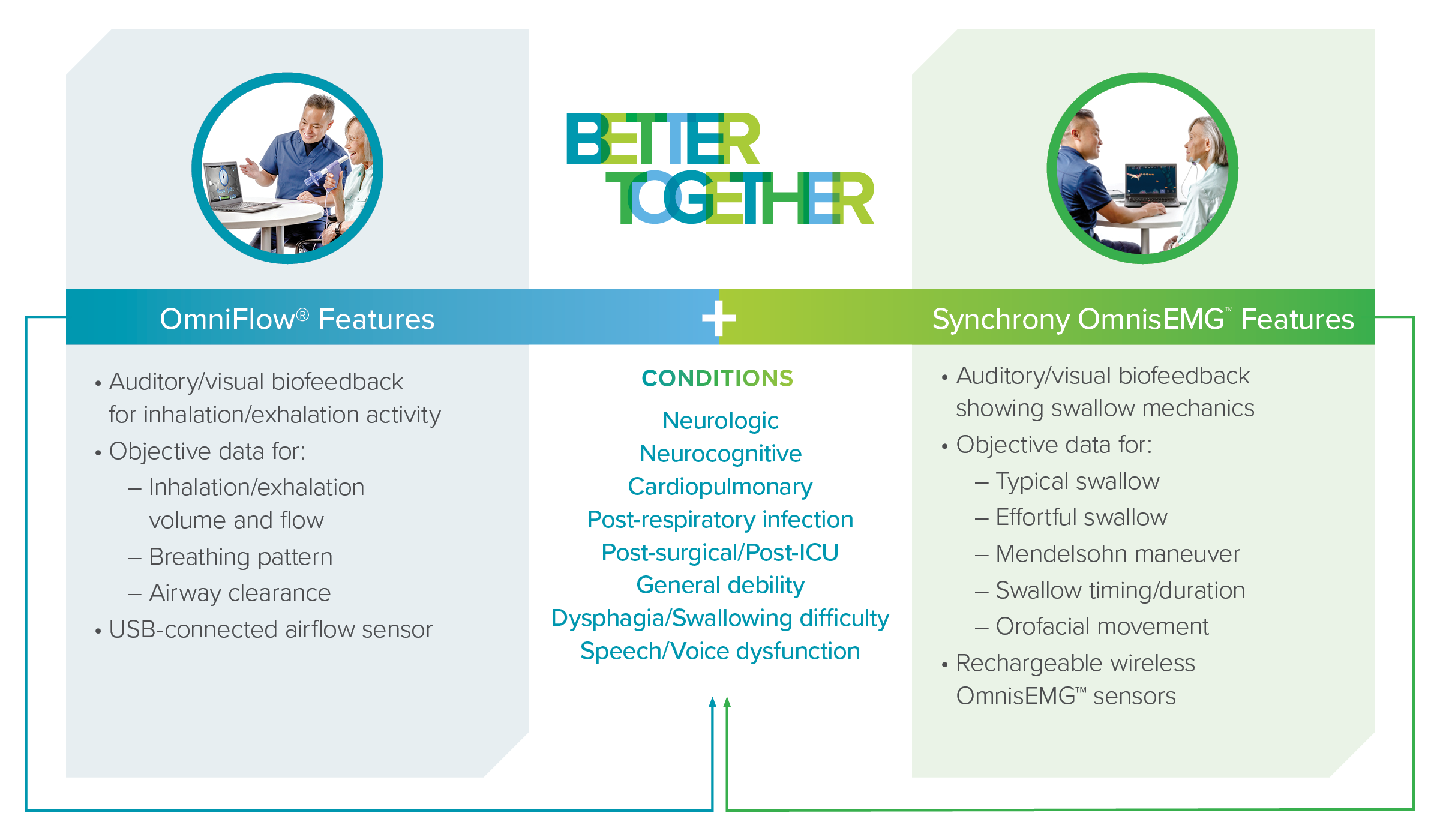OmniFlow + Synchrony: Clinical Application
Many patients currently deal with limitations in breathing or swallowing/speech due to their disease or condition. Breathing and swallowing/speech are so closely coordinated that these limitations may also occur together.
Advanced rehab technology using OmniFlow® for breathing exercise and Synchrony OmnisEMG™ for swallowing and speech exercise can each help treat a variety of conditions. These systems provide virtual reality exercise visualizations with customizable parameters allowing for patient-specific exercise performance and progression. When both systems are used, more limitations can be addressed to achieve optimal outcomes. They are better together!

Clinical Research
• Individuals with conditions that do not affect the lungs (e.g., Parkinson’s disease, stroke, osteoporosis, fibromyalgia, low back pain) may still have respiratory dysfunction. Breathing exercise in their treatment plan can reduce respiratory symptoms, fatigue, and pain in order to improve posture, physical activity, and quality of life. (Köseoğlu et al., 2022)
• Inhalation/exhalation exercise significantly improves respiratory muscle strength, lung measures, and fatigue in patients post-stroke. It also improves post-stroke dysphagia and dysarthria. (Liaw et al., 2020)
• At a minimum, clinicians must have visual feedback to shape swallowing behavior and improve accurate performance. Otherwise, the clinician may reinforce incorrect swallow movements, which is not beneficial for motor learning purposes. (Galek et al., 2023)
References:
Galek, K.E., Bice, E.M., Allen, K. (2023). The Influence of Three Feedback Conditions on Performing a Swallow Motor Pattern in Healthy Adults. Folia Phoniatrica et Logopaedica (Karger). https://doi.org/10.1159/000525634
Köseoğlu B. F. (2022). Is there a role of pulmonary rehabilitation in extrapulmonary diseases frequently encountered in the practice of physical medicine and rehabilitation?. Turkish journal of physical medicine and
rehabilitation, 68(2), 159–168. https://doi.org/10.5606/tftrd.2022.10711
Liaw, M. Y., Hsu, C. H., Leong, C. P., Liao, C. Y., Wang, L. Y., Lu, C. H., & Lin, M. C. (2020). Respiratory muscle training in stroke patients with respiratory muscle weakness, dysphagia, and dysarthria - a prospective randomized
trial. Medicine, 99(10), e19337. https://doi.org/10.1097/MD.0000000000019337
CS-NEWS-PTOT-0002
